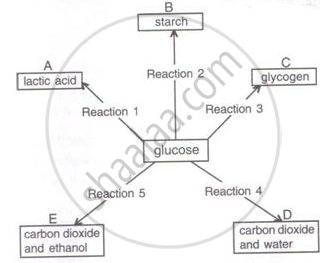Advertisements
Advertisements
Questions
Do the plants respire all day and night or only during the night?
Do the plants respire all day and night or only during the night? Give reasons.
Solution
Plants respire all day and night because their cells need a steady source of energy for all the different processes that happen inside them. Plants need energy to grow, for root cells to get into the ground and take in water and minerals, and for many other things. Therefore, plants are always breathing, day and night.
RELATED QUESTIONS
Write the overall chemical equations of the two kinds of respiration in plants.
(i) Aerobic:
(ii) Anaerobic:
Answer the following in one word.
What is formed when oxygen combines with hemoglobin?
Tick the most appropriate answer.
Inside the chest, the trachea divides into two branches called
Mention if the following statement is true or false. If false, rewrite them correctly.
Aerobic respiration of one mole of glucose yields 138 ATP.
Differentiate between the following pairs on the basis of the aspect given in the brackets.
Aerobic and Anaerobic respiration (End products of the process)
Given below are chemical reactions (1 to 5) involving glucose and five other chemical products (A-E).

Write the reaction number of the following:
(i) Anaerobic respiration in plants __________
(ii) End products in aerobic respiration ____________
(iii) Reaction occurring in liver _________
(iv) Anaerobic respiration in animals ________
(v) Storage in the liver _________
Distinguish between:
Fermentation and anaerobic respiration.
Fill in the blank:
The first phase of respiration is ______.
The question has four options. Choose the correct answer:
The role of oxygen in cellular respiration
The question has four options. Choose the correct answer:
The energy liberated during respiration is stored in the form of
The question has four options. Choose the correct answer:
The energy liberated in aerobic respiration is
Answer the following question.
How would you demonstrate that yeast can respire both aerobically and anaerobically?
Answer the following question.
Discuss “The respiratory pathway is an amphibolic pathway”.
Differentiate between Aerobic respiration and fermentation.
Tabulate the differences between aerobic and anaerobic respiration.
Glycolysis takes place in ______.
Describe and name three stages of cellular respiration that aerobic organisms use to obtain energy from glucose.
Identify the process represented in the following equation.
\[\ce{C6H12O6 + 2NAD + 2ADP + 2Pi -> CH3 - CO - COOH + 2NADH2 + 2ATP}\]
Out of 38 ATP molecules formed in aerobic respiration, the number of ATPs formed outside mitochondria is ______
Identify the INCORRECT statement.
______ glucose molecules are required for the formation of 52 pyruvic acid molecules at the end of glycolysis.
Study the following statements with respect to Krebs cycle and select the correct option.
- As per need, acetyl CoA or some other intermediates like a-ketoglutarate, oxaloacetate of Krebs cycle are used as precursors for synthesis of fatty acids, glutamic acid and aspartic acid respectively.
- Various reactions of Krebs cycle involve step-wise oxidation of acetyl part of acetyl CoA leading to release of energy and C02.
In which of the conversions, NADH + H+ is not formed?
Which of the following is the CORRECT statement with respect to the steps involved in glycolysis?
During glycolysis the compounds PGAL and DHAP are formed from fructose 1, 6 diphosphate by ____________.
During incomplete oxidation of one molecule of glucose, ______ get reduced.
During which of the following reactions substrate-level phosphorylation occurs?
At how many steps decarboxylation takes place in single Krebs cycle?
At how many places, Co-A is used in aerobic respiration after glycolysis?
Lack of oxygen in muscles often leads to cramps among cricketers. This results due to
